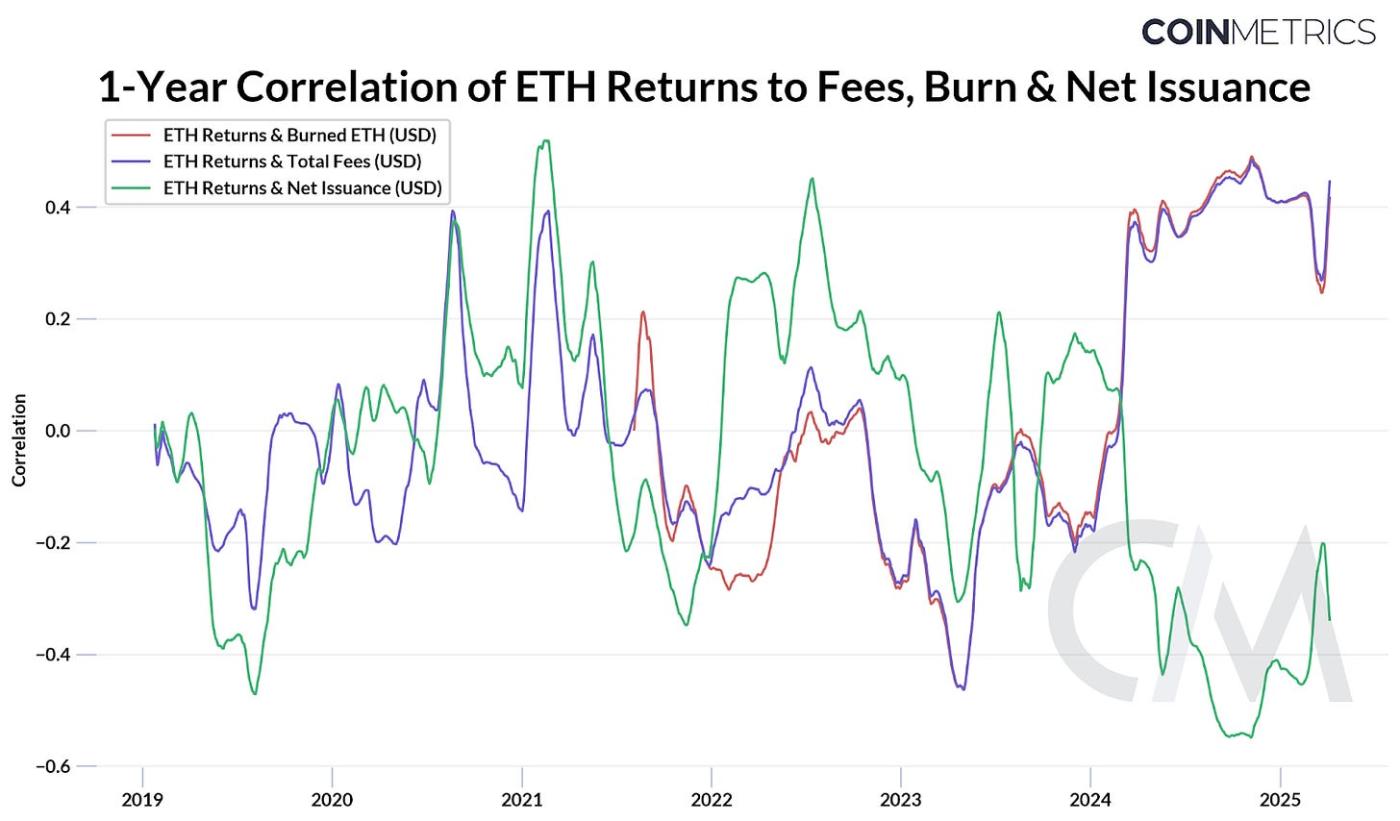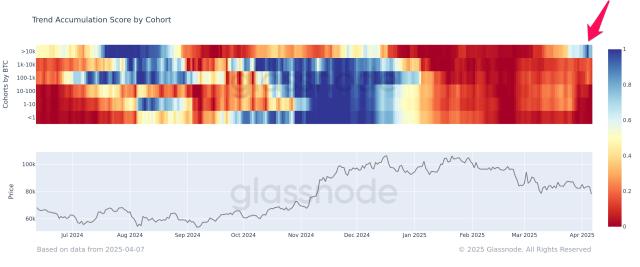Get the best data-driven crypto insights and analysis every week:
The Evolving Relationship Between Ethereum and Its Layer-2s
By: Tanay Ved
Key Takeaways:
As Ethereum leans into a Layer-2-centric scaling model, activity has increasingly migrated to L2s. This has helped scale its ecosystem but also reduced mainnet transaction demand, reshaping Ethereum’s economic dynamics.
The introduction of blobspace in the Dencun upgrade made L2 settlement significantly cheaper, enabling profitable L2s like Base—which has earned ~$94M in profit while paying just ~$4.9M to Ethereum. This has reignited debate over whether L2s are extractive or symbiotic.
ETH’s returns are increasingly tied to network fundamentals like fees and burn, suggesting it’s being valued as a revenue-generating asset. As those metrics decline, ETH’s underperformance reflects market concerns around weakening value accrual.
Upcoming upgrades like Pectra aim to double blob capacity and stimulate demand across both L1 and L2, laying the groundwork to restore long-term value to Ethereum’s ecosystem.
Introduction
One year since the launch of blobs (type-3 transactions) in the Dencun upgrade, Ethereum’s transition to a Layer-2 based scaling model is well underway. As demand for blockspace grew and the constraints of Ethereum mainnet became more pronounced in 2021, the network turned to Layer-2s (L2s) as a way to scale Ethereum's ecosystem. Activity has increasingly migrated to L2s like Base, Arbitrum and Optimism, reshaping Ethereum’s economic model and surfacing new questions about ETH’s value accrual as it continues to underperform.
In this issue of Coin Metrics' State of the Network, we explore the evolving relationship between Ethereum and its Layer-2 ecosystem, examining how L2 usage and economics are reshaping Ethereum’s on-chain activity, and the path to restoring ETHs value accrual.
The Great Layer-2 Migration
To scale beyond the constraints of Ethereum’s Layer-1, namely limited throughput and high transaction fees during periods of rising blockspace demand, Ethereum turned to Layer-2s as supporting infrastructure to grow transaction capacity and drive adoption. By processing transactions off-chain, L2s help Ethereum scale, achieving higher throughput, at lower costs, while also retaining its underlying security.
This strategy has taken shape with Ethereum now serving as a settlement and data availability layer for a growing set of Optimistic and ZK-rollups. Beyond general-purpose rollups like Arbitrum and Optimism, exchanges like Coinbase (Base) and firms like Sony (Soneium) are launching their own Layer-2s, while projects like MegaETH are building rollups optimized for specific high-performance use cases.
Source: Coin Metrics Network Data Pro
Together, these L2s are significantly expanding Ethereum’s ecosystem. Optimism is seeing 990K daily transactions while Base, Coinbase’s Layer-2 is alone adding 7.5M transactions with both currently featuring 2.5 second block times.
The Dencun upgrade in March 2024 introduced blobspace, dramatically reducing L2 settlement costs and making transactions more affordable. This drew a large volume of activity, particularly lower-value transactions, away from mainnet, while also keeping them from alternative low-fee chains like Solana or Binance Smart Chain. Some assets like USDC and cbBTC are now also natively issued on L2s like Optimism and Base, while many are being bridged to access applications on Layer-2s.
This dynamic has led to many questioning whether Layer-2s are net positive for Ethereum, or whether they are “extractive”. While the answer is nuanced, understanding how Layer-2s operate, the impact they’ve had and where they go from here can be helpful.
The Economics Behind Layer-2s
At the center of every Layer-2 is the sequencer. This is infrastructure (often operated by a single entity today), that orders and batches user transactions into blocks, and posts compressed transaction data back to Ethereum for settlement and data availability (DA). Layer-2s generate revenue from the fees users pay to transact on the network and incur costs when submitting data to Ethereum, primarily through blob fees. Profitability lies in the difference between what L2s earn from users and what they pay to Ethereum.
Revenues, Costs, and the Profitability of Layer-2s
Since the adoption of blob transactions introduced in EIP-4844, Layer-2 settlement costs have dropped significantly. Blobs offer a more efficient and scalable form of data storage, with average costs often under $1—rising only during periods when usage exceeds the target capacity of 3 blobs per block, which increases the blob base fee.
Spikes in demand from events like onrush of “blobscriptions” or the LayerZero airdrop briefly drove blob fees higher. However, from November to March, blobs have consistently hit target capacity, with fee increases driven by organic usage.
Source: Coin Metrics Network Data Pro
As a result of these low costs, combined with the fact that many Layer-2s operate “Stage 0” rollups with a single sequencer, L2s can be quite a profitable business model. Taking Base as an example, a rollup that has seen the most user demand thus far, earned a total of ~$98M in revenues from user transaction fees (including base and priority fees), while paying only ~$4.9M to the Ethereum base layer, resulting in a total estimated profit of $94M since the Dencun upgrade in March 2024 (not accounting for Base’s revenue share with the Optimism Collective).
Source: Coin Metrics Network Data Pro
While Base leads in this regard, a host of other L2s like Optimism and Arbitrum operate at healthy margins, balancing blockspace demand with cost-optimization strategies. This highlights how Layer-2s, with low operating costs and growing user activity, are becoming a viable and scalable business model, further incentivizing L2 growth and adoption within Ethereum’s ecosystem.
Source: Coin Metrics Network Data Pro
Impact on Ethereum Mainnet & ETH Valuation
As Layer-2s thrive, Ethereum’s core economics have seen several unintended consequences. With transaction activity shifting to L2s, blockspace demand on mainnet has declined. Total Layer-1 fees, (including base fees, priority fees, and blob fees), have fallen from over ~$30M at the time of the Dencun upgrade to around ~$500K today. As a result, ETH burn has slowed to record lows (~100 ETH per day), pushing Ethereum’s annualized inflation rate to +0.78%.
Source: Coin Metrics Network Data Pro
This shift has reignited debate around the role that Layer-2s play. Some argue they are “extractive,” capturing a disproportionate share of economic value while paying back only a fraction to Ethereum through blob fees. Others view them as symbiotic, growing Ethereum’s network effects and utility.
As ETH’s price reaches a 2-year low, questions around value accrual have become more pressing. The 1-year correlation of ETH returns to network metrics like total fees and burned ETH has strengthened (+0.4) since 2023, while its correlation to net issuance has turned negative. This suggests that ETH is increasingly being priced on its fee revenue.
Source: Coin Metrics Network Data Pro & Reference Rates
As mainnet fees and burn rates decline, and net issuance rises, investors appear to be discounting ETH’s valuation, reflecting concerns about weakening value accrual.
This pattern shows the reflexive nature of Ethereum’s economics. As network usage rises, so do fees and burn, supporting ETH’s price and vice versa. While this doesn’t mean ETH’s value accrual is fundamentally broken, it shows the market is highly sensitive to blockspace demand (fees & burn). As Ethereum continues its Layer-2 transition, ETH’s valuation may reflect lower mainnet activity in the short term. However, it could regain momentum through the same reflexive dynamics, especially if value accrual becomes better aligned across layers.
Pectra & The Path To Restoring Value Accrual
Ethereum’s upcoming Pectra upgrade, now scheduled for May 7th, will mark the first step in a broader effort to expand blob capacity. It will raise the target from 3 to 6 blobs per block and the maximum to 9 blobs, helping reduce blob fees and make Layer-2 settlement even more scalable. Future upgrades like Fusaka are expected to continue this trajectory, aiming to unlock greater aggregate transaction demand across L2s and ultimately drive higher blob usage and fee revenue for Ethereum.
Source: Coin Metrics Network Data Pro
However, this won’t be easy as it’d require L2 transaction volumes to grow by several orders of magnitude, which might take longer to play out with future protocol upgrades. Therefore the key to restoring Ethereum’s value disconnect potentially lies in stimulating both L1 and L2 demand:
Scaling Layer-2s: Growing L2 capacity and usage to drive higher aggregate blob fees.
Reinvigorating & Scaling Layer-1: Simultaneously scaling L1, and attracting high-value use cases like stablecoins, tokenization, and DeFi to restore mainnet activity and fee accrual.
Ethereum developers and Vitalik himself acknowledged the need to scale Ethereum’s Layer-1, even in an L2-centric future. This effort has begun with a recent gas limit increase from 30M to 36M, with further upgrades planned for the Ethereum Virtual Machine (EVM) and cross L1-L2 interoperability. While many other approaches, such as native or based-rollups, or potential changes to blob fee pricing are being explored, this remains the broad direction for Ethereum’s development.
Conclusion
As Ethereum’s modular roadmap unfolds, its relationship with Layer-2s will remain central to both network scalability and ETH’s long-term value. While short-term growing pains are evident, the groundwork is being laid for a more sustainable and scalable economic model. As Ethereum positions for broad adoption, it must contend with balancing the complexity of ongoing protocol upgrades, while scaling the ecosystem and restoring value accrual. With over $230B in stablecoins and a growing share of tokenized assets, Ethereum remains well-positioned to capitalize on renewed demand and real-world adoption.
Track Ethereum’s L2 economics and blob usage in our dashboard!
Coin Metrics Updates
For more on Ethereum, check out our Analyst Spotlight Ethereum overview.
Follow Coin Metrics’ State of the Market newsletter which contextualizes the week’s crypto market movements with concise commentary, rich visuals, and timely data.
As always, if you have any feedback or requests please let us know here.
Subscribe and Past Issues
Coin Metrics’ State of the Network, is an unbiased, weekly view of the crypto market informed by our own network (on-chain) and market data.
If you'd like to get State of the Network in your inbox, please subscribe here. You can see previous issues of State of the Network here.














